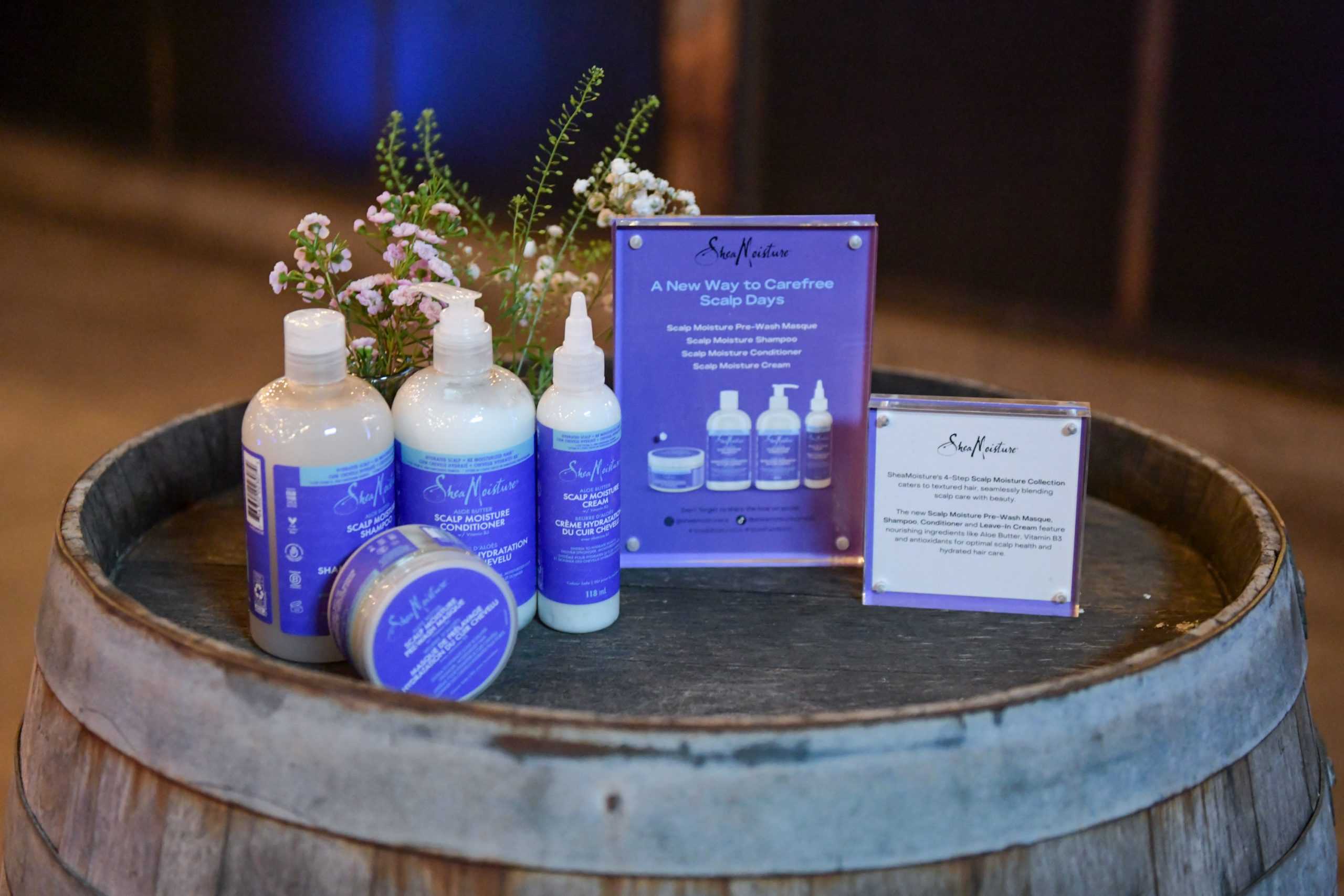BY TRISHA SMITH
In the heart of downtown is the historical charm known as the Distillery District. Nestled within this urban tapestry were the most beautiful Black women and men, dressed in purple and blue glam, coming to celebrate yet another SheaMoisture collection in the sheik Archeo event space.
The atmosphere was giving luxe with a welcoming and social vibe. As soon as I arrived, I was given a cute flower crown that brought yet another layer of cohesiveness in everyone’s matching attire.
The place was buzzing with Toronto influencers: women in business, creatives and journalists like me, eager to connect, while enjoying a tasteful selection of finger food and signature cocktails. DJ Martina was spinning the latest Afrobeats and R&B, keeping the energy high. There was a visual artist vendor customizing complimentary plants, and hairstyling stations, where women were upping their hair game with SheaMoisture’s new product collection.
Speaking of new collections, SheaMoisture is launching a whopping eight new products this summer! The Scalp Moisture collection consists of 4 new products: shampoo, conditioner, pre-wash masque and scalp cream. The original Coconut & Hibiscus Frizz Free Curl Mousse has two new sisters: a multi-styling mousse from the Manuka Honey & Yogurt line, and the Wrap and Set Mousse, from the Manuka Honey & Mafura Oil line. This one is for roller sets and twist outs while the multi-styling mousse was formulated for the ladies with braids, locks and up-dos. There was also a new whipped curl cream, and last, but certainly not least, a Coconut and Hibiscus +Flaxseed edge gel. We all know a Black girl’s edge is the icing on any hairstyle and this edge gel offers a semi-firm hold without the flaking and unnatural stiffness.
I’ve had the opportunity to smell and try them all and as always, the scents never decline, and the consistency is on point. One thing I personally love about this brand is their dedication in providing Black women clean organic ingredients, free of parabens, petroleum and mineral oil which is a big plus in my book as a registered nutritionist. It’s important to note that whatever we put in our scalp and on our bodies, goes directly into our bloodstream. Harmful ingredients can cause toxic build-up and hormone disruption while SheaMoisture’s organic ingredient profile does what it’s supposed to do, minus the hidden harm.
My personal favourite from the line is the scalp cream. It’s used just like hair oil but what I love about it is the cream application. I don’t have to worry about an overly shiny scalp with oil dripping down my forehead on a hot summer day. I also don’t have to be weary of the oil messing up my clothes during application (which happens every so often). The application tip t is perfect, the cream goes directly on my scalp, and it disappears as soon as you massage it in. No white film or build up and I’ve been using it every day! It’s obvious that our hair concerns are always at the forefront and SheaMoisture always has its way of delivering exactly what we need.
Their dedication to fair trade and ethical sourcing has brought forth fair wages and a better quality of life for families in Ghana and Burkina Faso. SheaMoisture has not only made their mark globally with remarkable products, but they have changed the lives of thousands through partnerships and most importantly, giving back.
SheaMoisture was also proud to announce their second year of the Dream Fund! This fund is a continuation of the grant program to offer financial support to the community. The Dream Fund grant program offers $10,000 each to five Black owned businesses in the beauty and wellness space. If you are a Black business with a product, or service that serves the community, you are encouraged to apply for your chance to win! Applications open April 15th, 2024, and close May 31st, 2024. Winners will be announced July 15th, 2024! Keep in mind, you do not need to be a hairstylist, or specifically in the beauty industry to apply.
Last year, a book publishing company, a fitness organization, a chef and a hair accessory company took home the gold. No matter how big, or small your company is, think about the greater impact you can make with an extra $10,000! The Dream Fund serves all Black businesses across Canada and is just one of the many grants, scholarships and funding accessible to the Black community on a global scale.
SheaMoisture is out here making big moves and standing with the underdogs so we can all rise in power and service to our community, and for that I will always support this product line and their initiatives.

